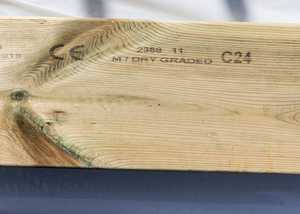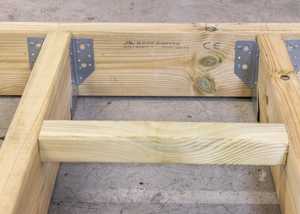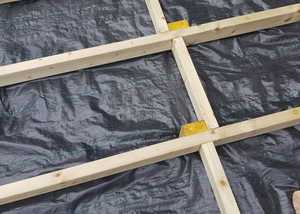Why Buying the Right Structural Timber is Such an Important Decision
For thousands of years, ever since humans first had the good sense to build settlements in tree-rich rural areas, timber has been a common yet staunchly reliable material used for construction.
Fast forward to the present day, and there are a multitude of engineered structural timber solutions available for both domestic and commercial use; each with its own unique benefits and application.
No matter the size or scale of the job, when it comes to creating strong and load-bearing structures, selecting the right timber is an essential part of the process—and, as with any important decision, it’s always a smart idea to lean on the experts to ensure you’re making the right choice.
With that in mind, let us guide you through some of the key factors to consider when searching for the appropriate structural timber for your project.
First up, an important question:
What is structural timber?
When creating a load-bearing structure—either internal or external—it’s crucial that the raw materials used are durable enough to support the maximum expected load. Whether you’re building a stud wall, a floor, or a roof frame, the finished structure needs to be sturdy, reliable and, above all, safe.
Structurally-graded timber is designed with the express intention of meeting these core practical demands. During the manufacturing process, the timber is graded according to its structural resilience and suitability for load-bearing. The important decision comes when selecting the right structural grade for the relevant application.
Grading timber
There are two primary methods used to grade timber: visual strength grading or machine strength grading. Any good structural timber provider must use certified graders or licenced machines to determine a timber’s strength class. Only by using an extensive checklist of natural characteristics can the timber be accurately graded—this includes testing the wood’s propensity to bend, its performance under tension, as well as its density and elasticity.
Grain defects, sap stains and wanes are also considered when establishing the timber’s strength class. Any timber that has been correctly strength graded will be marked clearly—with a CE symbol, either on the product or its packaging—to indicate that it’s been through the relevant testing procedures.
No CE symbol; no guarantees that the timber is fit for purpose.



What timber should I use?
Before embarking on your structural building project, it’s important to ascertain what type of timber is best suited for the job. The task is to find a wood species that will satisfy all the necessary criteria of the structure; in terms of stability, design and aesthetics.
This is a decision that needs to be researched and landed upon early in the planning stage of the project.
At a basic level, your options are relatively straightforward. Structural timber is either made using hardwoods—sourced from broad-leaved trees—or softwoods—sourced from conifer trees. Each has their own distinctive properties that make them suitable for different structural tasks.
The strong homegrown softwood Douglas fir, for example, is a superb lightweight structural material. Its low density, reduced load weight, and its ability to be worked efficiently makes it a perfect choice for frames and interior mouldings. On a practical level, softwood is often a more abundant material than hardwood—and is much cheaper, too!
For aesthetic purposes, where the wood is exposed, hardwoods such as red oak or selected softwoods like pine are the go-to structural timber of choice. Their natural grain and patterns can create eye-catching features; ideal for paneling, outdoor decking—any situation where you’re trying to accentuate the organic characteristics of the timber.
What is the difference between C16 and C24 timber?
C16 timber is a hugely-versatile timber that is used for a variety of structural purposes. You’re most likely to encounter this grade when creating wallplates, stud walls, floor and roof joists and rafters. It’s worth noting that C16 has some allowance for natural defects, such as wanes and grain anomalies, which can jeopardise the general strength of the timber.
Despite these shortcomings, this grade of timber contains numerous beneficial qualities—including density, bending and compression— that make it suitable for a wide range of structural applications. To reduce moisture content, C16 is kiln-dried, a crucial process that helps maintain the timber’s durability. Overall, C16 is a highly cost-effective, multipurpose structural timber.
Meanwhile, C24 timber is the grade to opt for when exceptional strength and aesthetics are the primary objectives of your structural project. As such, you’ll most commonly find C24 timber in the construction of bridges, rafters, joists and balconies. Any structure where heavy load-bearing across a wide span is a chief concern.
While C24 is generally the costlier option when it comes to structural timber, it does provide the optimal strength needed for these types of construction assignments—combine that with the superior aesthetic qualities compared to C16, and it’s easy to see how the financial outlay adds up.
C24’s exceptional visual properties are observable on the smooth, uniform surface of the timber. Unlike C16, this structural timber is sourced from trees with a markedly slower growth rate—owing to the unique climate they’re exposed to. This results in fewer defects and a greater overall strength.
CLS timber
Despite its name, Canadian Lumber Standard can also be found in the UK and Europe, and is another timber with a multitude of structural applications. CLS is used commonly in the construction of internal partition stud walls, carcassing and framing. Most often sourced from spruce, pine or fir trees, this grade of timber is kiln-dried to minimise moisture content. CLS timber’s smooth, planed finish enables it to be painted, stained or treated for an extra dose of aesthetic and protective quality.
How can we help?
Fountain Timber are specialists in providing both domestic and commercial clients with a wide range of premium-grade, competitively-priced structural timber—including C16, C24 and CLS in a variety of lengths and sizes, both untreated and pressure treated for external use.
We make certain that all our timber products are sourced from responsibly-managed sources. If you’d like any help or advice about our structural timber and its suitability for your project, please don’t hesitate to get in touch with the team and we’d be happy to answer any questions.
The information and advice in this article is provided in good faith and is designed to give general information and guidance. Any reliance you place on such information is therefore strictly at your own risk. If in doubt we strongly recommend you seek professional assistance.
Posted on October 14th 2021

